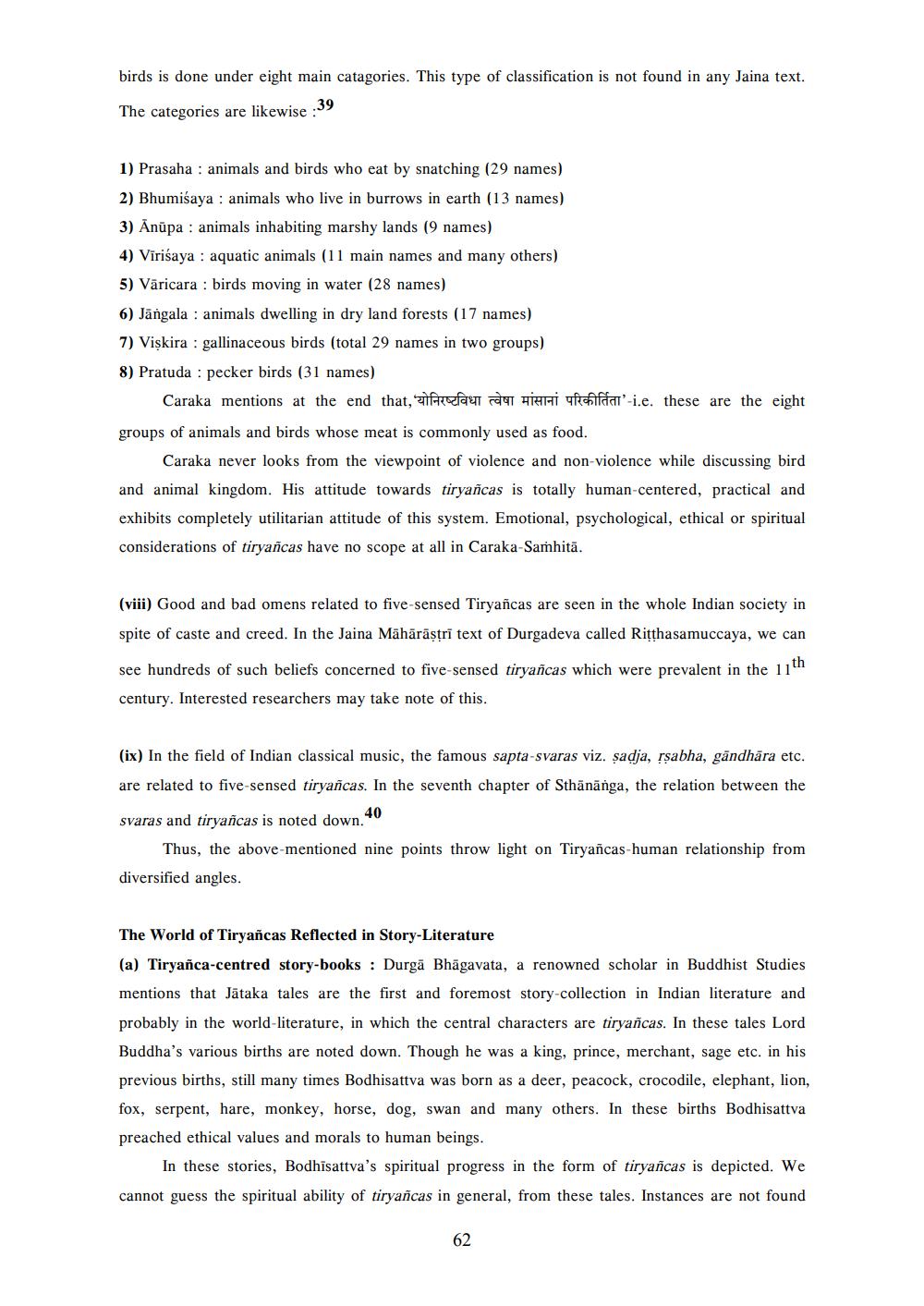________________
birds is done under eight main catagories. This type of classification is not found in any Jaina text.
The categories are likewise :39
1) Prasaha : animals and birds who eat by snatching (29 names) 2) Bhumiśaya : animals who live in burrows in earth (13 names) 3) Anupa : animals inhabiting marshy lands (9 names) 4) Virisaya : aquatic animals (11 main names and many others) 5) Vāricara : birds moving in water (28 names) 6) Jāngala : animals dwelling in dry land forests (17 names) 7) Viskira : gallinaceous birds (total 29 names in two groups) 8) Pratuda : pecker birds (31 names)
Caraka mentions at the end that, Tiffaut 91 HH Radat-i.e. these are the eight
groups of animals and birds whose meat is commonly used as food.
Caraka never looks from the viewpoint of violence and non-violence while discussing bird and animal kingdom. His attitude towards tiryancas is totally human-centered, practical and exhibits completely utilitarian attitude of this system. Emotional, psychological, ethical or spiritual considerations of tiryañcas have no scope at all in Caraka-Samhitä.
(viii) Good and bad omens related to five-sensed Tiryancas are seen in the whole Indian society in spite of caste and creed. In the Jaina Māhārāstrī text of Durgadeva called Ritthasamuccaya, we can
see hundreds of such beliefs concerned to five-sensed tiryañcas which were prevalent in the 11" century. Interested researchers may take note of this.
(ix) In the field of Indian classical music, the famous sapta-svaras viz. sadja, rsabha, gāndhāra etc. are related to five-sensed tiryancas. In the seventh chapter of Sthānānga, the relation between the
svaras and tiryancas is noted down.40
Thus, the above-mentioned nine points throw light on Tiryancas-human relationship from diversified angles.
The World of Tiryancas Reflected in Story-Literature
(a) Tiryanca-centred story-books : Durgā Bhāgavata, a renowned scholar in Buddhist Studies mentions that Jātaka tales are the first and foremost story-collection in Indian literature and probably in the world-literature, in which the central characters are tiryancas. In these tales Lord Buddha's various births are noted down. Though he was a king, prince, merchant, sage etc. in his previous births, still many times Bodhisattva was born as a deer, peacock, crocodile, elephant, lion, fox, serpent, hare, monkey, horse, dog, swan and many others. In these births Bodhisattva preached ethical values and morals to human beings.
In these stories, Bodhisattva's spiritual progress in the form of tiryancas is depicted. We cannot guess the spiritual ability of tiryañcas in general, from these tales. Instances are not found
62




